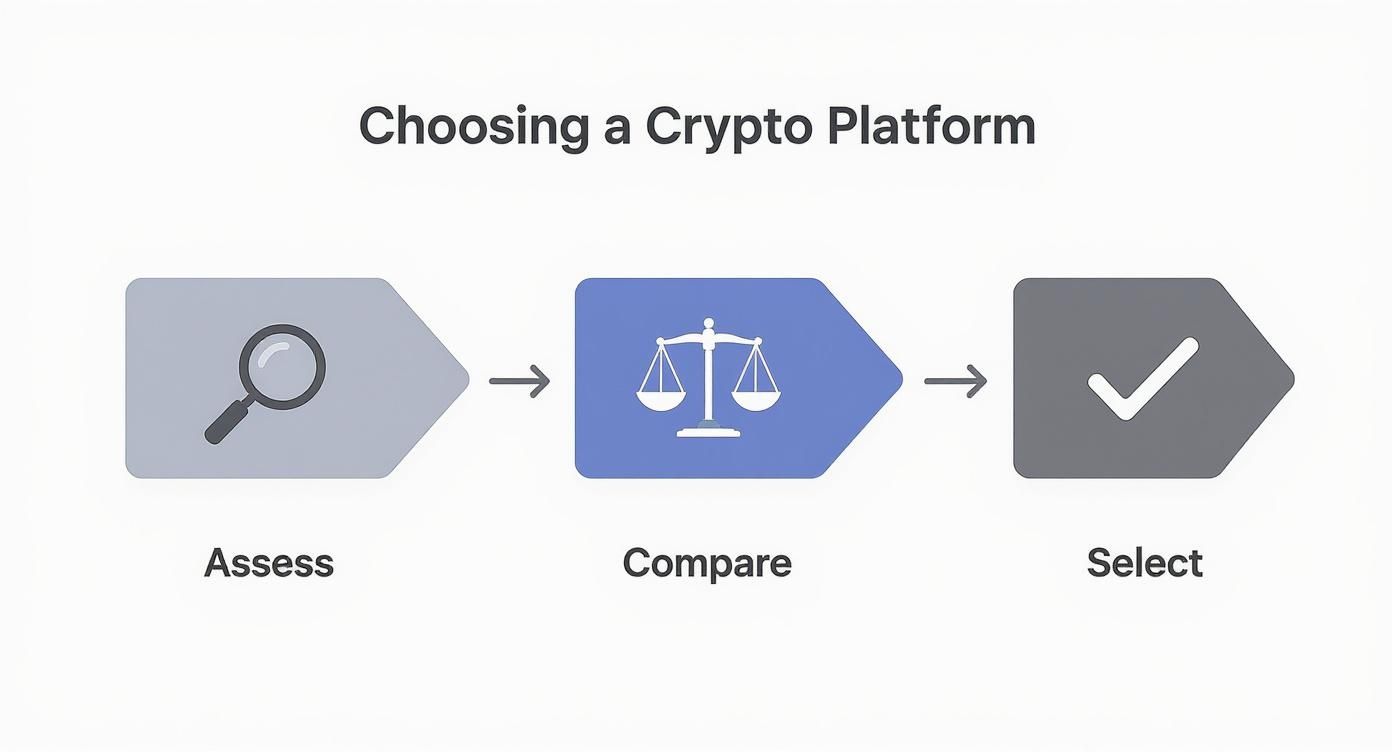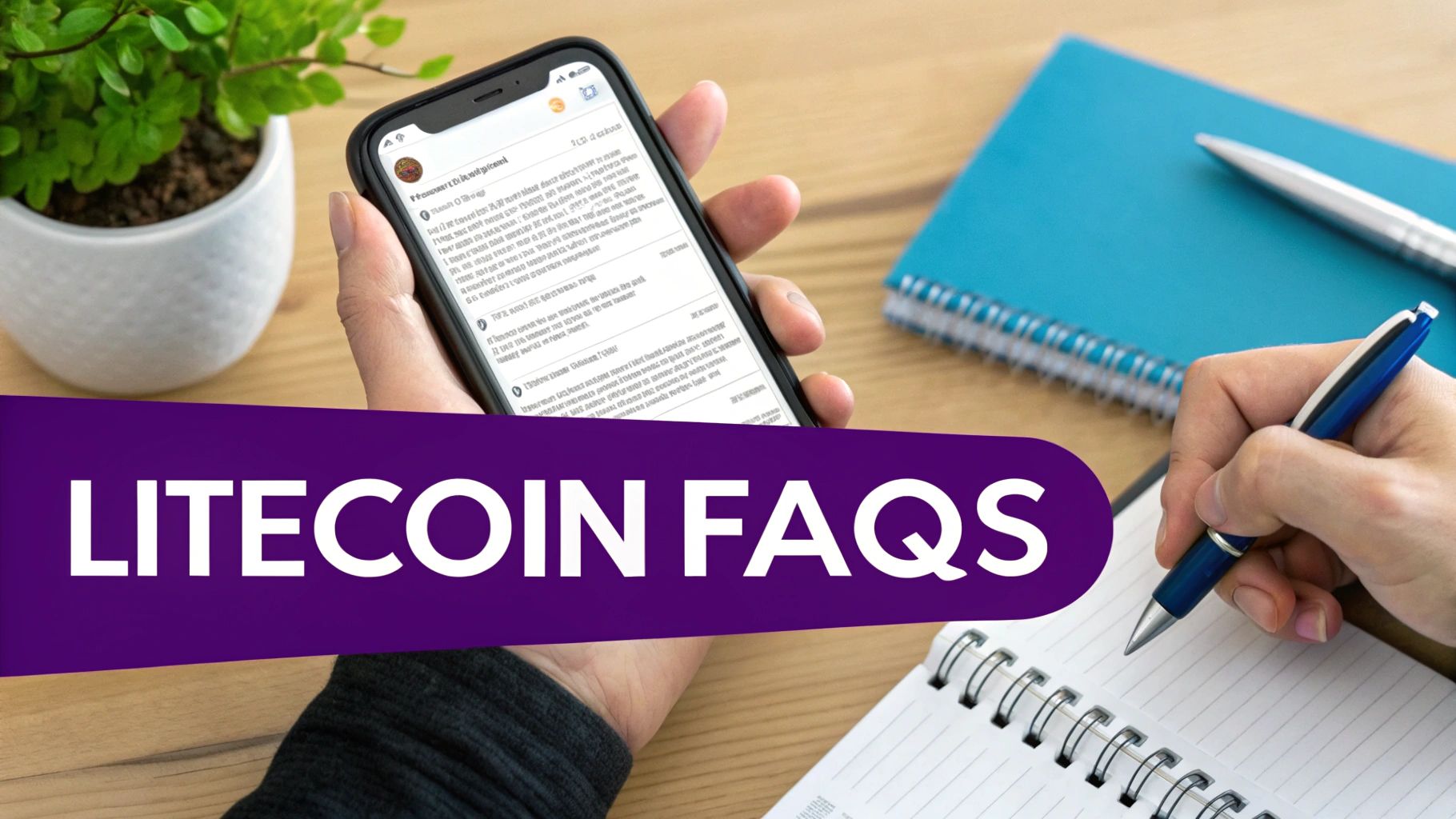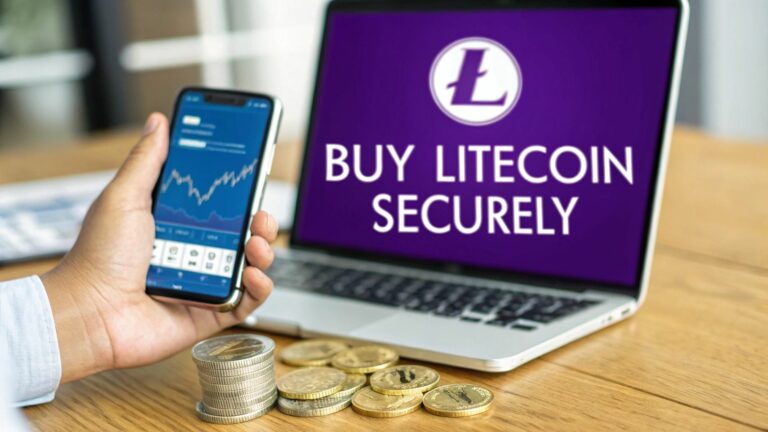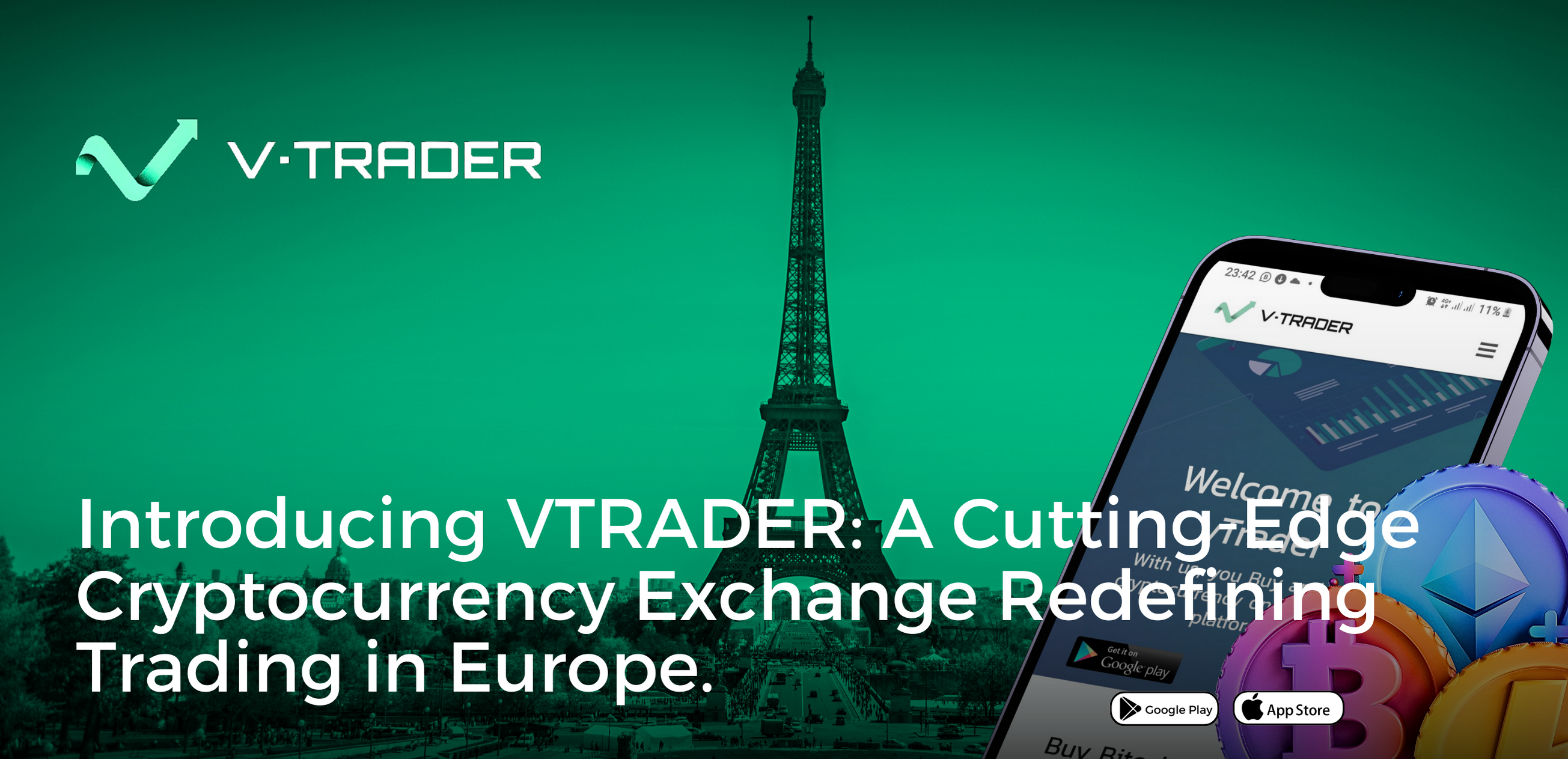Jumping into cryptocurrency doesn't have to feel like a high-stakes puzzle. If you want the most direct path to owning Litecoin, it really just comes down to three things: picking a solid crypto exchange, getting your account set up and verified, and then pulling the trigger on the purchase. This approach cuts right through the noise, letting you get started with confidence.
Your Quick Guide to Buying Litecoin

Before you hit "buy" on your first bit of Litecoin, it helps to know why so many people choose it. It's often called the "digital silver" to Bitcoin's "digital gold." Created back in 2011, Litecoin was designed to be a lighter, faster version of Bitcoin, making it more practical for everyday use.
The biggest wins? Faster transaction confirmations and lower fees. This makes it a great choice for smaller, more frequent payments where waiting minutes for a confirmation just isn’t practical.
Your first major decision is choosing the right platform. This choice sets the stage for everything else, influencing the fees you'll pay, the security of your funds, and how easy the whole process is.
Comparing Top Platforms to Buy Litecoin
A side-by-side look at popular cryptocurrency exchanges to help you choose where to start your Litecoin journey.
| Platform | Best For Beginners | Accepted Payment Methods | Typical Fee Structure |
|---|---|---|---|
| vTrader | Yes, intuitive design | Bank Account, Debit/Credit Card, Apple Pay | Low, transparent trading fees |
| Coinbase | Yes, very user-friendly | Bank Account, Debit Card, PayPal, Wire Transfer | Tiered, can be higher for small purchases |
| Kraken | Intermediate to Advanced | Bank Account, Wire Transfer, Crypto Deposits | Low maker/taker fees, complex structure |
| Binance | Intermediate to Advanced | Bank Account, Debit/Credit Card, P2P Trading | Very low trading fees, withdrawal fees vary |
Choosing the right exchange is personal—what works for a day trader might not be the best fit for a first-time buyer.
Not all crypto exchanges are built the same. Some are streamlined for beginners with dead-simple interfaces, while others pack in advanced charting tools for seasoned pros. When you're just learning how to buy Litecoin, keep an eye on a few key things:
- Payment Methods: How easy is it to get your money in? Look for options like bank transfers, debit cards, or even Apple Pay. Convenience is king.
- Fee Structure: You need transparency here. Some platforms have a simple flat rate, while others use a percentage-based system that can get confusing.
- User Experience: A clean, intuitive app or website makes a world of difference. Your first crypto purchase shouldn't feel like you're trying to launch a rocket.
I've seen it happen too many times: a beginner picks a platform because of a flashy low fee, only to get hit with hidden charges for deposits and withdrawals. Always, always check the full fee schedule before you commit your funds.
Getting these basics right is your first step toward making a smart investment. If you're serious about building a strong foundation of crypto knowledge, the resources over at the vTrader Academy are a fantastic place to start. Think of it as your roadmap to navigating the crypto market like a pro.
Choosing the Right Platform to Buy Litecoin
Where you buy Litecoin is just as important as when you decide to jump in. The platform you pick is your front door to the crypto market, and it affects everything from your fees to the safety of your assets. It really boils down to finding a good match between your own experience level and what the platform offers.
If you’re just learning how to buy Litecoin, you’ll probably want a simple mobile app and the ability to pay with a debit card. On the other hand, if you’re a seasoned trader, you’re likely hunting for the absolute lowest trading fees to squeeze every bit of profit from your frequent trades.
Key Factors to Evaluate
Before you sign up anywhere, you need to vet the platform. Think of it as a checklist for your peace of mind and your wallet.
- Security Features: Non-negotiables here. Look for two-factor authentication (2FA), a policy of keeping customer funds in cold storage (offline), and a clean track record when it comes to protecting user accounts.
- Customer Support: When something goes wrong—and sooner or later, it will—you need to know you can get help. Is there 24/7 support? Can you reach a real person via live chat?
- Regulatory Standing: Make sure the exchange is fully compliant with the laws in your country. This isn't just a formality; it's a layer of protection.
The best platform isn't the one with the flashiest ads. It's the one that fits your goals and comfort level. Don't just chase low fees; prioritize security and a clean user experience, especially when you're starting out.
Centralized vs Peer-to-Peer Exchanges
Most people new to crypto will start with a centralized exchange (CEX), like vTrader or Coinbase. Think of them like a traditional stock brokerage. They give you a straightforward interface, and because lots of people are using them, they have high liquidity—meaning you can buy and sell fast without the price jumping around too much. They also handle asset custody for you, which simplifies things immensely.
Peer-to-peer (P2P) platforms are the other side of the coin. They connect you directly with other sellers. This can open up more payment options and sometimes lower fees, but it puts the responsibility on you to spot and avoid scams.
Fees are always a huge factor, and you need to know exactly what you're paying. You can see a great example of transparent pricing by looking at vTrader's fee schedule. If you want to compare a few options, this list of the best cryptocurrency exchanges for beginners is a solid starting point.
This choice is backed by Litecoin's proven stability. In one landmark year, it processed over 300 million transactions, demonstrating just how robust and secure its network really is.
Walking Through Your First Litecoin Purchase
Alright, let's move from theory to action. You've picked a platform you trust, and now it’s time to actually buy some Litecoin. This part can seem like the most nerve-wracking step, but it’s really just a methodical process once you see it laid out.
The first thing you'll do on any exchange worth its salt is create an account. It’s the usual drill—email, strong password, and you're in. But right after that, you’ll hit the identity verification step, which the industry calls Know Your Customer (KYC). Don't be put off by this; it’s a standard regulatory requirement and a huge green flag that the platform is legitimate and secure.
Linking Your Payment Method
With your account verified, you need a way to get your money in. Most exchanges, including vTrader, give you a few solid options:
- Bank Account (ACH Transfer): This is my go-to recommendation for most people. It's usually the cheapest way to fund your account, though you might have to wait a couple of business days for the funds to show up.
- Debit Card: If you want to buy instantly, this is your best bet. The trade-off is that you’ll likely pay slightly higher fees for the convenience.
- Wire Transfer: This is really for larger investments. It’s highly secure but can be slower and more expensive than a simple bank transfer.
For a first-time buyer, securely linking your bank account hits the sweet spot between low cost and reasonable speed.

As you can see, taking a methodical approach by weighing the features and fees of different platforms leads to a much more confident first purchase.
Placing Your First Order
Now for the exciting part. Your account is funded, and you're ready to make your move. When you go to buy Litecoin, you'll generally find two main ways to do it: a market order or a limit order. Understanding the difference is key to getting the price you’re happy with.
A market order is the most straightforward option. You’re essentially telling the exchange, "Buy me Litecoin right now at whatever the best current price is." It’s fast, simple, and guarantees your order gets filled. For beginners who just want to get in the game without overthinking it, this is the way to go.
A limit order, on the other hand, puts you in the driver's seat. With this, you set the exact price you're willing to pay per coin. Your order will sit and wait, only executing if and when the market price for LTC hits your target. This is great for more patient buyers who have a specific entry point in mind. For a better sense of where the price is today, you can check out the real-time Litecoin chart on vTrader.
For your very first purchase, a market order is the most direct path to owning your first bit of Litecoin. You can always get more advanced with limit orders later on as you get more comfortable.
How to Secure Your Litecoin After You Buy It

Getting your hands on some Litecoin is a great first move, but the work doesn't stop there. Actually owning it is just half the battle—keeping it safe is what really matters. This is where you'll hear the old crypto saying, "not your keys, not your coins," and it’s something you need to take seriously.
When your Litecoin sits on an exchange, you're essentially letting a third party hold your money. It’s convenient for quick trades, sure, but it's a risky bet for long-term storage. The exchange holds the private keys, which means you don't have ultimate control. That’s why figuring out how to properly secure your Litecoin is a non-negotiable step for any responsible owner.
The answer is moving your crypto to a personal wallet where you, and only you, are in charge of the private keys.
Hot Wallets vs. Cold Wallets
You’ve got two main choices for taking control of your crypto: hot wallets and cold wallets. Each has its place, and knowing the difference is crucial for protecting your investment.
- Hot Wallets: Think of these as software on your computer or phone. They're always connected to the internet, which makes them super convenient for everyday transactions. They're perfect for holding small amounts of Litecoin you plan on using or trading soon.
- Cold Wallets: These are physical devices, like a specialized USB drive, that keep your private keys completely offline. They offer the highest possible security against online threats like hacks and phishing attacks, making them the gold standard for storing any serious amount of crypto.
Here’s a simple way to think about it: a hot wallet is like your everyday spending cash, while a cold wallet is your fortified savings vault. If you're holding a meaningful amount of Litecoin, a cold wallet is hands-down the way to go.
When you first set up any new wallet, it will give you a recovery phrase, which is typically 12 or 24 words. This phrase is the master key to all your funds. Never, ever store it digitally. Write it down on paper and hide it somewhere safe and offline. If you lose that phrase, your crypto is gone for good.
Making an Informed Purchase Decision
Knowing how to hit the "buy" button is one thing, but making a smart investment is something else entirely. It all starts with really understanding the asset you're putting your money into.
Litecoin is often called the "digital silver" to Bitcoin's "digital gold." This isn't just a catchy phrase—it gets to the heart of what Litecoin is. It was designed to be a faster, lighter alternative for everyday payments, not just a way to store wealth.
Its price doesn't move in a vacuum. Real-world events like merchant adoption, tech upgrades, or even just the general mood of the crypto market can have a huge impact. Getting a handle on these factors means you’re making decisions based on solid ground, not just hype. To get a feel for the landscape, you can explore other crypto assets on vTrader and see where Litecoin fits in.
Understanding Market Signals
You don't need a degree in finance to spot important trends. A few key metrics can give you a pretty clear picture of an asset's health. Things like transaction volume and the number of active addresses are great places to start.
An informed investor looks beyond price charts. They focus on signs of genuine adoption and network activity, as these are the long-term drivers of value.
For example, a sudden spike in active addresses can signal that more people are actually using the network. At one point, active Litecoin addresses jumped by 15%, and daily transaction volumes hit $2.8 billion. Numbers like that show it has real-world utility. You can dig deeper into Litecoin's network statistics to start building a data-driven view of your own.
Common Questions About Buying Litecoin

Even with a clear roadmap, a few questions always seem to come up when you’re getting started. Let’s tackle some of the most common ones I hear from new investors so you can move forward with confidence.
First up is the big one: "How much Litecoin should I actually buy?" There’s no perfect answer, but the best advice I can give is to invest only what you are comfortable losing. The crypto market can be a rollercoaster, so never put in money you might need for bills or emergencies.
A great way to get your feet wet without taking on too much risk is through dollar-cost averaging (DCA). It sounds complex, but it's simple: you invest a small, fixed amount on a regular basis. Think $25 every Friday, no matter what the market is doing. This strategy averages out your purchase price over time and takes the emotion out of trying to "time the market."
Using Credit Cards and Avoiding Mistakes
People often ask if they can just use a credit card to buy Litecoin. The short answer is yes, many platforms allow it, and the transaction is usually instant. But you need to be aware of the downsides.
- Higher Fees: Exchanges almost always charge more for credit card purchases than they do for a standard bank transfer.
- Cash Advance Charges: This is the real killer. Your credit card company might treat a crypto purchase like a cash advance, which means you get slammed with high fees and interest starts piling up from day one.
Always call your card issuer before you buy to see how they classify crypto purchases. That convenience can end up costing you a lot more than you bargained for. For more platform-specific details, the comprehensive vTrader FAQ page is a great resource.
So, what are the biggest mistakes to sidestep? Triple-check every wallet address before sending funds—once it’s gone, it’s gone forever. If you see a "giveaway" promising to double your crypto, run. It's a scam, 100% of the time. And most importantly, guard your private keys and recovery phrases like they’re priceless. Never share them with anyone or store them online where a hacker could find them.
Ready to make your first move with confidence? vTrader offers a secure, commission-free platform to buy, sell, and manage your Litecoin. Start building your portfolio today.

Steve Gregory is a lawyer in the United States who specializes in licensing for cryptocurrency companies and products. Steve began his career as an attorney in 2015 but made the switch to working in cryptocurrency full time shortly after joining the original team at Gemini Trust Company, an early cryptocurrency exchange based in New York City. Steve then joined CEX.io and was able to launch their regulated US-based cryptocurrency. Steve then went on to become the CEO at currency.com when he ran for four years and was able to lead currency.com to being fully acquired in 2025.


